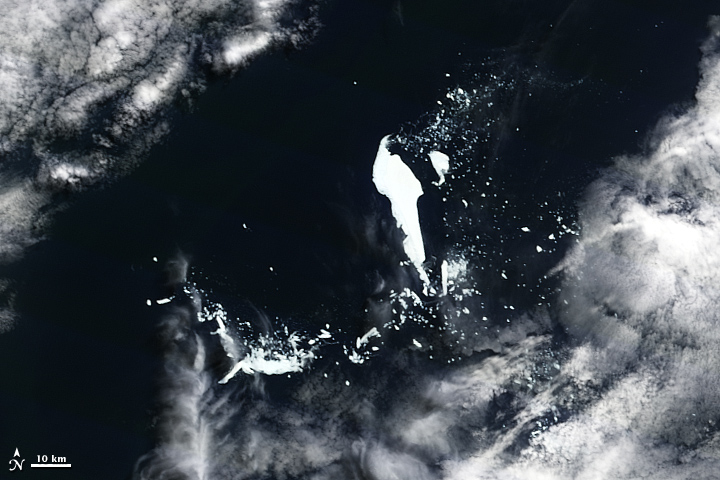
Icebergs Scoured Florida During Ice Age

SAN FRANCISCO — During the last ice age, icebergs carved trenches in the ocean floor as far south as Miami, according to research presented here yesterday (Dec. 6) at the annual meeting of the American Geophysical Union.
Based on the sea level at the time, some 20,000 years ago, the chunks of floating ice must have reached at least 320 to 650 feet (100 to 200 meters) tall to reach the seafloor, said Jenna Hill, a professor at Coastal Carolina University in South Carolina. "You had to have had big, huge chunks of ice," Hill told OurAmazingPlanet.
The channels, seen in sonar surveys, run between 30 to 165 feet (10 to 50 m) wide and 6 to 16 feet (2 to 5 m) deep. They are smaller and fewer in number than the hundreds of iceberg scours Hill discovered off the South Carolina coastline in 2006. Hill's latest study found up to 100 marks off northern Florida, and four at the state's southern tip.
The deep grooves are evidence of a cold current running southward along the Florida coastline during the last ice age, sometime since 20,000 years ago, Hill said. Gigantic floods from glacial lakes in the Arctic provide one likely source for the frigid flow. During the last ice age, vast pulses of freshwater — more than all the water in the Great Lakes combined — periodically poured into the Atlantic Ocean through the northeastern United States and Canada.
The iceberg scours suggest that these floodwaters flowed south, rather than pooling in the North Atlantic Ocean. The cold current likely deflected the warm Gulf Stream, altering the climate in North America and Europe, Hill said.
Hill initially discovered the scours while conducting high-resolution sonar surveys for geologic studies of submarine gas blowouts along the East Coast. The long furrows and pits perplexed researchers at first, but the similarity to seafloor features in the modern Arctic and Antarctic soon became apparent.
Hill said additional surveys may reveal more scours in Florida and help pin down their age.
Get the world’s most fascinating discoveries delivered straight to your inbox.
"The more mapping we do, the more we can learn about the seafloor," she said. "We didn't initially set out to find iceberg scours [in 2006]," Hill said. "This opens the door to a lot of new information about past climate patterns and past ocean circulation patterns."
This story was provided by OurAmazingPlanet, a sister site to LiveScience. Reach Becky Oskin at boskin@techmedianetwork.com. Follow her on Twitter @beckyoskin. Follow OurAmazingPlanet on Twitter @OAPlanet. We're also on Facebook and Google+.

